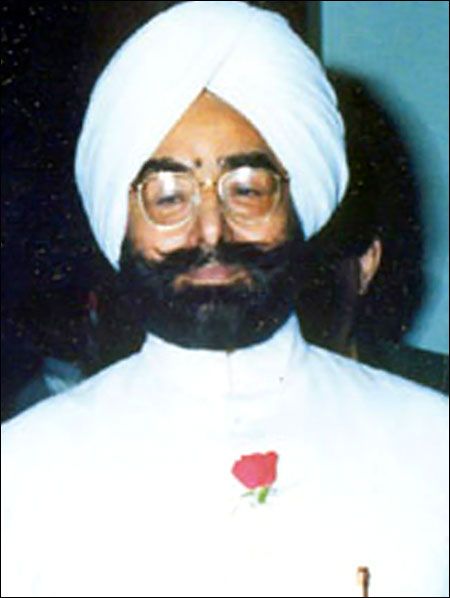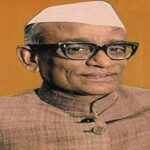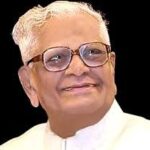Giani Zail Singh: A President Who Lived for the People
Giani Zail Singh, the seventh President of India, is remembered for his remarkable journey from humble beginnings to the nation’s highest office. Born on May 5, 1916, in Sandhwan village in Punjab, he was a self-made man who rose through sheer determination and unwavering commitment to public service. Zail Singh, with his down-to-earth nature and devotion to the people, left an indelible mark on India’s political and social fabric.
Who Was Giani Zail Singh?
Giani Zail Singh was not just a politician; he was a freedom fighter, a scholar of Sikhism, and a deeply empathetic leader. His life story is an inspiring account of resilience, leadership, and service to society.
Early Life and Education
- Humble Beginnings: Born into a modest family, Zail Singh faced hardships early in life, losing his mother at a young age.
- Education: Despite limited resources, he pursued studies in Sikh theology and earned the title “Giani,” which means a scholar or learned person in Sikhism.
- Spiritual Foundation: His education in Sikh scriptures profoundly influenced his values and leadership style.
Role in India’s Freedom Movement
Zail Singh played a role in India’s freedom struggle, actively opposing British rule.
- Protesting Colonial Oppression: He was arrested for burning British goods during the independence movement.
- Inspiration from Mahatma Gandhi: Like many of his contemporaries, he was inspired by Gandhi’s principles of non-violence and civil disobedience.
Political Career
Giani Zail Singh’s political journey is one of steady ascent, marked by a strong connection with the grassroots and a focus on social justice.
- Chief Minister of Punjab (1972-1977):
- Zail Singh became Punjab’s Chief Minister and prioritized education, rural development, and industrial growth.
- He worked to strengthen communal harmony in the state, which often faced religious tensions.
- Union Minister of Home Affairs (1980-1982):
- Under Prime Minister Indira Gandhi, Zail Singh held the portfolio of Home Affairs.
- His tenure was marked by efforts to improve internal security and address socio-political challenges.
- President of India (1982-1987):
- He was India’s first Sikh President, symbolizing inclusivity and representation.
- Zail Singh was deeply committed to his constitutional duties, even during politically turbulent times, such as Operation Blue Star and the assassination of Indira Gandhi.
Daily Life and Values
Giani Zail Singh’s daily life reflected simplicity, discipline, and a strong connection to his roots.
- Routine and Devotion: He began his day with prayers and maintained a spiritual outlook on life.
- Humility: Despite his high office, he was approachable and empathetic toward the common people.
- Dedication to Public Welfare: His focus on serving marginalized communities made him a beloved leader.
Interesting Facts About Giani Zail Singh
- He was the first Sikh to serve as the President of India, showcasing India’s diversity and secular ethos.
- Zail Singh introduced significant welfare programs during his tenure as Chief Minister and President.
- His tenure as President included some of the most challenging periods in Indian history, including the 1984 anti-Sikh riots.
- Despite political differences, he upheld the dignity of the President’s office, emphasizing the importance of constitutional values.
Significance and Legacy
Giani Zail Singh’s legacy lies in his commitment to social justice, secularism, and public service.
- Promoting Harmony: He worked tirelessly to bridge gaps between different communities, advocating for unity and peace.
- Support for Education: Zail Singh believed in empowering the masses through education, particularly in rural areas.
- Inspiration for Leadership: His rise from humble beginnings to the presidency inspires aspiring leaders to focus on service and empathy.
FAQs About Giani Zail Singh
Q1. What is Giani Zail Singh best known for?
He is best known for being India’s first Sikh President and his efforts to promote communal harmony and social welfare.
Q2. What were the key challenges during his presidency?
His tenure included the Operation Blue Star, Indira Gandhi’s assassination, and the 1984 anti-Sikh riots. Despite these challenges, he remained committed to his constitutional responsibilities.
Q3. How did Zail Singh contribute to rural development?
As Chief Minister of Punjab and later as President, he introduced programs aimed at improving rural infrastructure, education, and healthcare.
Observance and Relevance Today
Giani Zail Singh’s contributions are remembered through various initiatives, including institutions and scholarships named in his honor. His life serves as a reminder of the importance of humility, empathy, and service to society.
Giani Zail Singh’s life and leadership continue to resonate with people across India. His emphasis on secularism, social welfare, and education highlights the qualities that every leader should aspire to embody. A symbol of resilience and service, he remains a shining example of how dedication and humility can create a lasting impact on society.










